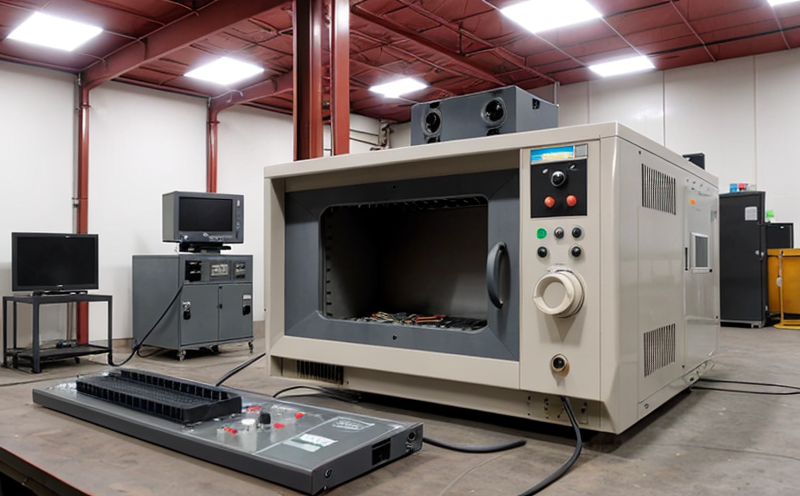CSA C22 2 14 Industrial Control Equipment Safety Testing
The CSA C22.2 No. 14 standard is a critical guideline for the safety testing of industrial control equipment used in various sectors, including manufacturing, mining, and process industries. This standard ensures that industrial control systems meet stringent safety requirements to protect workers from hazards such as electrical shock, fire, and explosion.
Industrial control equipment plays an essential role in modern factories and processes by automating tasks, monitoring conditions, and managing operations. However, these complex systems can pose significant risks if not designed, manufactured, or installed correctly. The CSA C22.2 No. 14 standard provides a framework for ensuring that industrial control equipment is safe to use under all expected conditions.
The testing procedures outlined in this standard are aimed at verifying the compliance of industrial control equipment with safety requirements defined by the standard. This includes evaluating aspects such as electrical protection, functional safety, and environmental robustness. By adhering to these standards, manufacturers can demonstrate that their products meet industry best practices and regulatory expectations.
The testing process typically involves multiple stages, each addressing different facets of equipment safety:
- Electrical protection: Ensuring the equipment is safe from electrical hazards such as short circuits or overcurrents.
- Functional safety: Confirming that the control system operates reliably under all conditions and fails safely in case of a fault.
- Environmental robustness: Evaluating how well the equipment can withstand environmental stresses like temperature, humidity, and vibration.
The testing methodology is designed to be comprehensive yet practical. It considers real-world scenarios where industrial control systems are likely to operate, ensuring that any potential risks are identified before the product reaches the market.
Quality and Reliability Assurance
The quality assurance process for CSA C22.2 No. 14 testing is rigorous and involves multiple levels of verification to ensure that industrial control equipment meets all specified safety requirements. The first step in this process is the initial review of design documentation, which includes detailed blueprints, schematics, and component specifications.
Once the design has been approved, the next phase involves laboratory testing using state-of-the-art equipment and facilities. This stage focuses on assessing the electrical protection features, functional safety mechanisms, and environmental robustness of the control system. The tests are conducted in controlled environments that simulate real-world conditions to provide accurate results.
Following laboratory testing, field trials may be required depending on the specific application of the industrial control equipment. These trials involve deploying the equipment in actual operational settings to observe its performance under live conditions. This step is crucial for identifying any potential issues that might not have been apparent during laboratory testing alone.
The final stage of quality and reliability assurance involves a review of the test results by independent experts who specialize in industrial control systems safety. Their role is to ensure that all aspects of the equipment’s design, construction, and functionality comply with the requirements set forth in CSA C22.2 No. 14.
Throughout this entire process, quality managers play a vital role by overseeing the testing procedures, ensuring adherence to standards, and making necessary adjustments based on feedback from each stage of evaluation. Compliance officers ensure that all regulatory requirements are met while R&D engineers focus on improving product design through continuous testing and iteration.
Environmental and Sustainability Contributions
The environmental impact of industrial control equipment is an important consideration, especially given increasing global awareness about sustainability. By ensuring that industrial control systems comply with the stringent safety requirements outlined in CSA C22.2 No. 14, manufacturers contribute positively to environmental protection.
Compliance with these standards helps prevent accidents and incidents that could lead to pollution or waste generation from faulty equipment. This not only protects natural resources but also reduces the risk of lawsuits and penalties associated with non-compliance.
Moreover, by adhering to best practices in industrial control system design and manufacturing, companies can help promote a more sustainable industrial sector. For instance, efficient use of energy and resources leads to lower operational costs for businesses while minimizing their ecological footprint.
Use Cases and Application Examples
- Manufacturing Plants: Ensuring the safety of automated assembly lines, conveyor systems, and robotic arms that handle hazardous materials or operate in explosive atmospheres.
- Mining Operations: Testing control systems for underground mining equipment to ensure they can function safely even in extreme temperature conditions and high humidity levels.
- Power Plants: Evaluating safety features of boiler controls, turbine governors, and other critical components that must operate reliably under severe thermal stresses.
- Chemical Processing Facilities: Verifying the integrity of process control systems used in handling toxic chemicals or flammable substances to prevent leaks or explosions.





